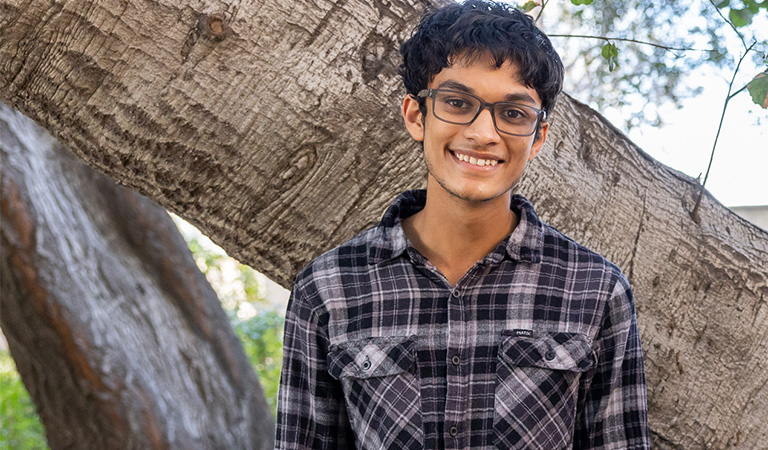Harvey Mudd Student Wins MAA Essay Contest
August 6, 2024
Harvey Mudd College computer science and mathematics major Mithra Karamchedu ’26 was recognized by the Mathematical Association of America (MAA) for his essay on the renowned mathematician and engineer Claude Shannon.
“A Mind, a Machine, and a Game in Between Claude Shannon and the Origin of the Information Age” delves into Shannon’s unique approach to research and his profound contributions to information theory. The essay was awarded first prize in the MAA’s history of math student essay contest and has been published in the MAA online journal, Convergence.
Karamchedu’s essay was born out of a project for the class Biography in Mathematics, taught by Jemma Lorenat, associate professor of mathematics at Pitzer College. The assignment required students to write a biography or metabiography of a mathematician, and Karamchedu chose Claude Shannon due to his dual identity as both an engineer and a mathematician.
“I had become very interested in information theory,” Karamchedu says. “One book that provided an initial spark for me to write about Shannon was James Gleick’s The Information. I thought that Shannon’s approach to research seemed so unique and exciting.”
Claude Shannon, often referred to as the “father of information theory,” was known for his ability to merge theoretical abstractions with practical applications. This duality is what captivated Karamchedu, who highlighted Shannon’s whimsical and playful approach to research in his essay.
“Shannon was fascinated by theoretical abstractions and was also drawn to the practicality of building things he found fun and interesting,” Karamchedu says. “What really stood out to me was how much he allowed his whimsy and sense of fun to drive his research, finding deep abstractions in places we don’t normally look, especially games and toys.”
Karamchedu’s essay focuses on the relationship between games and toys and Shannon’s two most famous papers: “A Symbolic Analysis of Relay and Switching Circuits” and “A Mathematical Theory of Communication.” He also touches upon Shannon’s lesser-known passions, such as juggling and chess. Shannon wrote an unpublished paper on the mathematics of juggling and built one of the world’s first chess-playing machines.
Through his exploration of Shannon’s work and philosophy, Karamchedu has gained valuable insights into his own research approach. Looking to the 2024 fall semester, Karamchedu is eager to bring Shannon’s playful spirit and innovative mindset to the HMC makerspace, a student-run facility with access to tools, resources, space and storage for personal and academic projects.
“Learning about Shannon has taught me the importance of looking for ideas in all things,” he says. “Shannon’s skill was being able to take complex ideas that we see in games, toys, puzzles and the world around us and distill them into elegant formulations. While many deep and beautiful ideas are motivated by pure theory, the cool things that we see in the world or that we build can have ideas that are just as powerful. This philosophy is incredibly inspiring to me, and I hope to implement it as much as I can.”
